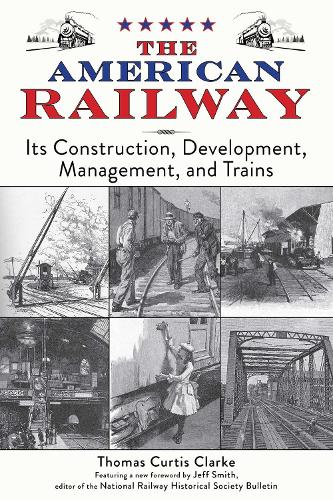
The American Railway: Its Construction, Development, Management, and Trains
(Paperback)
Available Formats
Publishing Details
The American Railway: Its Construction, Development, Management, and Trains
By (Author) Thomas Curtis Clarke
Foreword by Jeff Smith
Skyhorse Publishing
Skyhorse Publishing
10th November 2015
United States
Classifications
General
Non Fiction
385.0973
Physical Properties
Paperback
484
Width 152mm, Height 229mm
581g
Description
The early history of the American railroad by the man the New York Times calls one of the best-known civil engineers in America.
The American Railway provides an exciting look at the railroad industry in the 1880s and how it developed as the business boomed. Originally published in 1889, it contains a thorough history of how railroads were built, the types of railways, the lives of railway workers, the various ways the railway affected political and business economics, as well as the safety precautions of people who rode or worked with the railway system. Youll also find more than two hundred hand-drawn illustrationsvisual representations of great steam engines, graceful bridges, life in a Pullman car, railway accidents, views of track construction, and portraits of railroad pioneers and magnates of the timesand stories from real rail workers. Learn how far weve come from such humble beginnings and grow to have a newfound appreciation for the railways that paved our countrys future. This edition features a new foreword by Jeff Smith, editor of the NRHS Bulletin, the quarterly magazine published by the National Railway Historical Society.
Author Bio
Thomas Curtis Clarke was one of the most widely known railway engineers in the mid to late 1800s, behind the construction of several bridges and elevated railroads of New York. Upon his death in 1901, he was considered by the New York Times as one of the best-known civil engineers in America.
